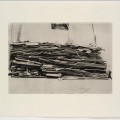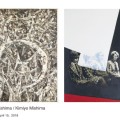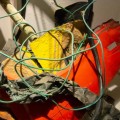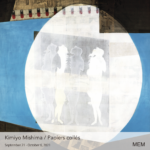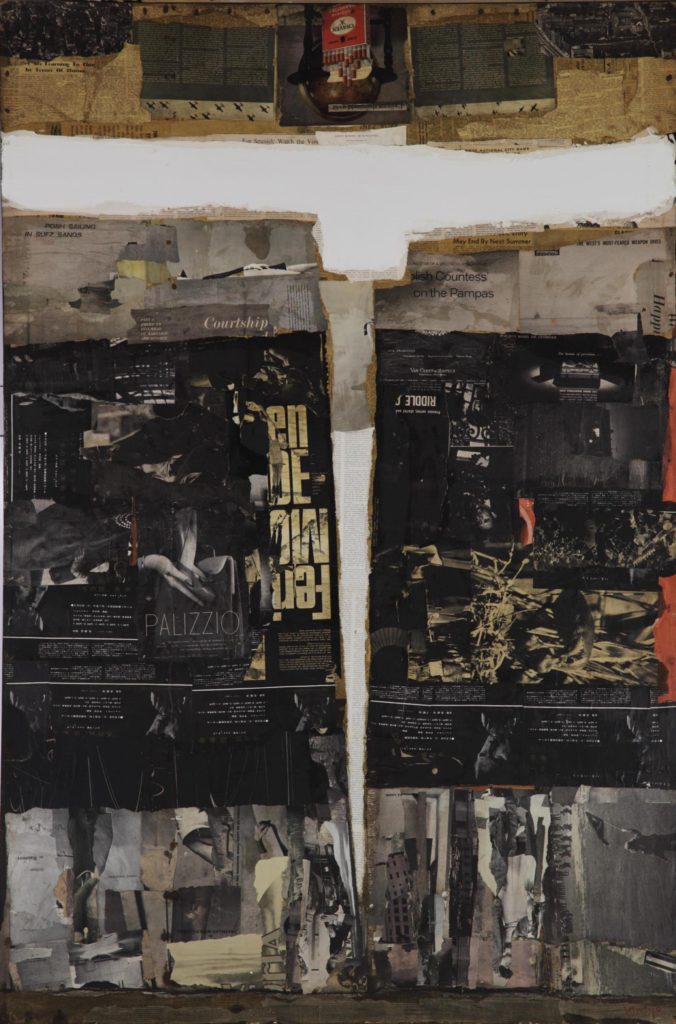
1967, Newspaper, magazine and acrylic on plywood, 182.2×121.4×2.8cm
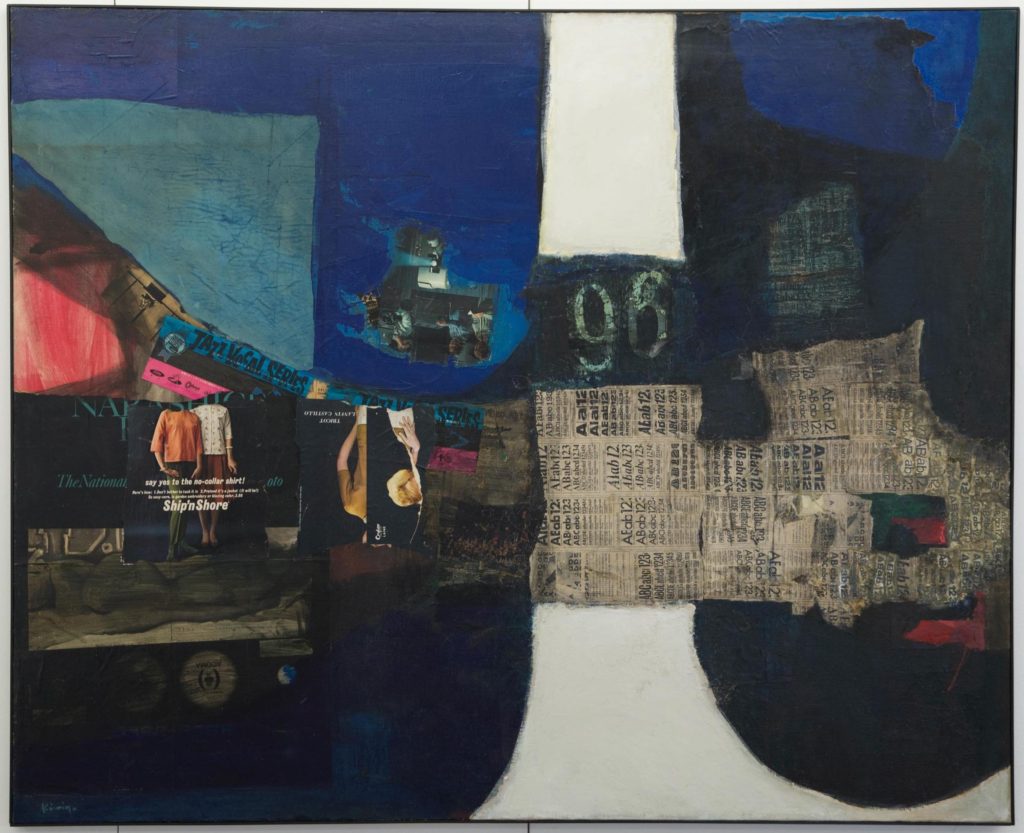
1966, Newspaper, magazine, acrylic on canvas, 163×132×3.5cm
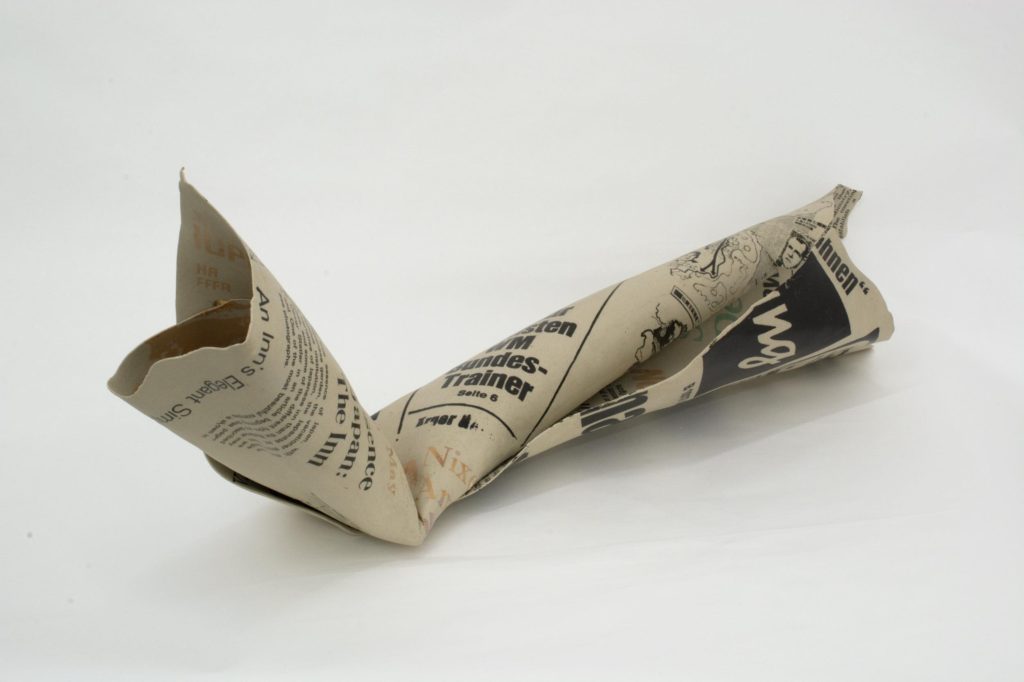
1971, Silkscreen on ceramic, 58×14×23cm
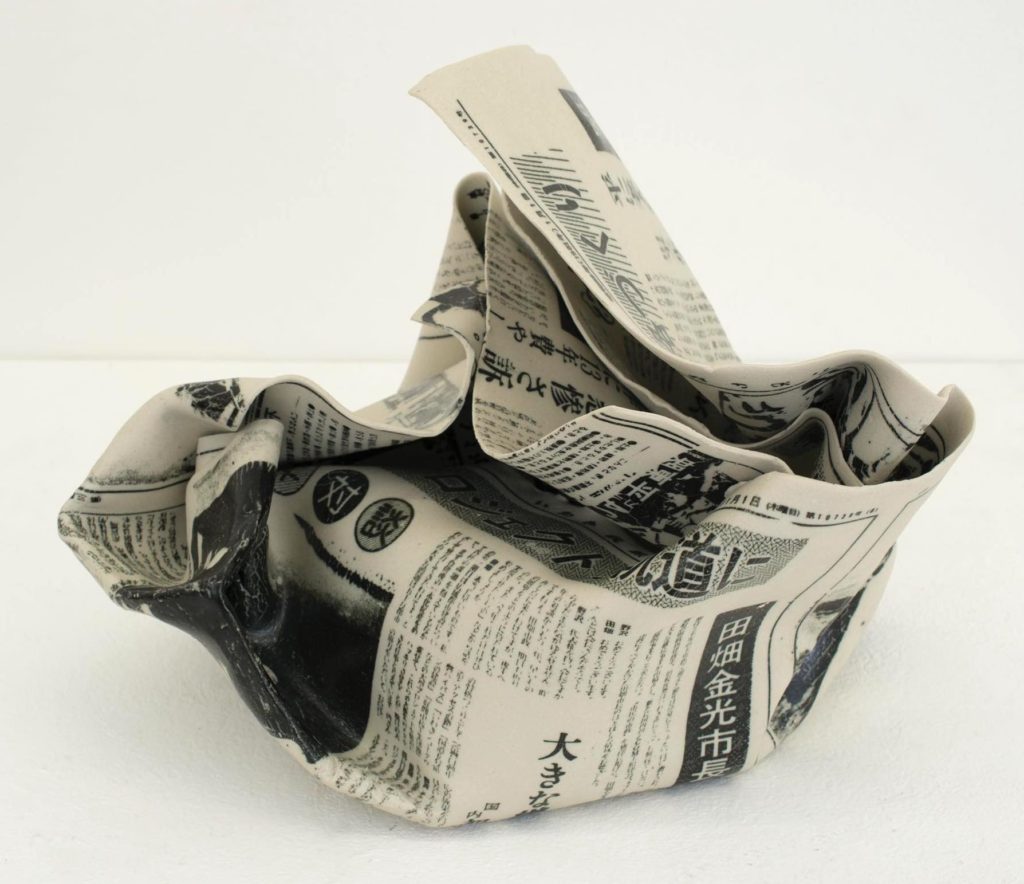
1981, Silkscreen on ceramic, 26.5×20.5×19.5cm
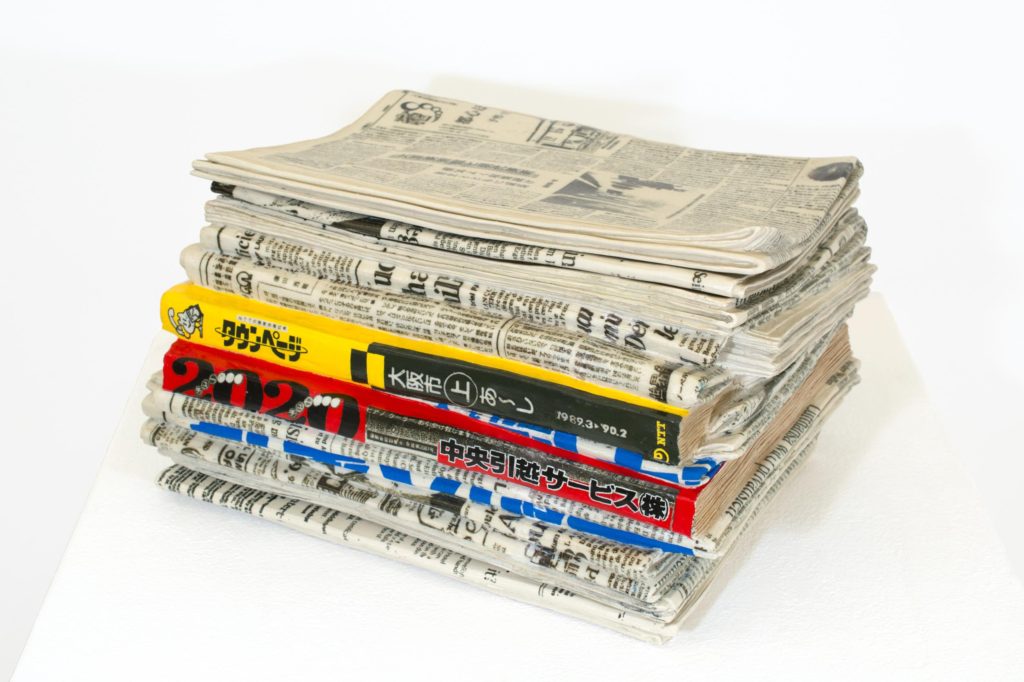
Newspaper P – 89
1989, Silkscreen and hand-painted on ceramic, 31×21×22cm
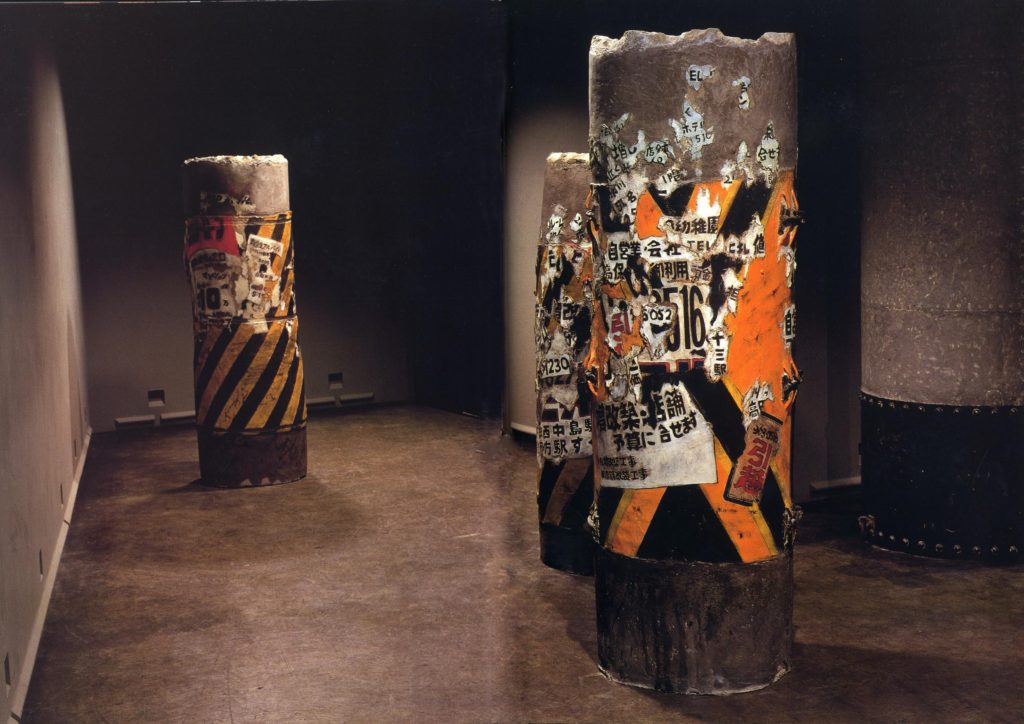
1984–1985, Ceramic, concrete, 156×56cm, 189×56cm, 185×60cm
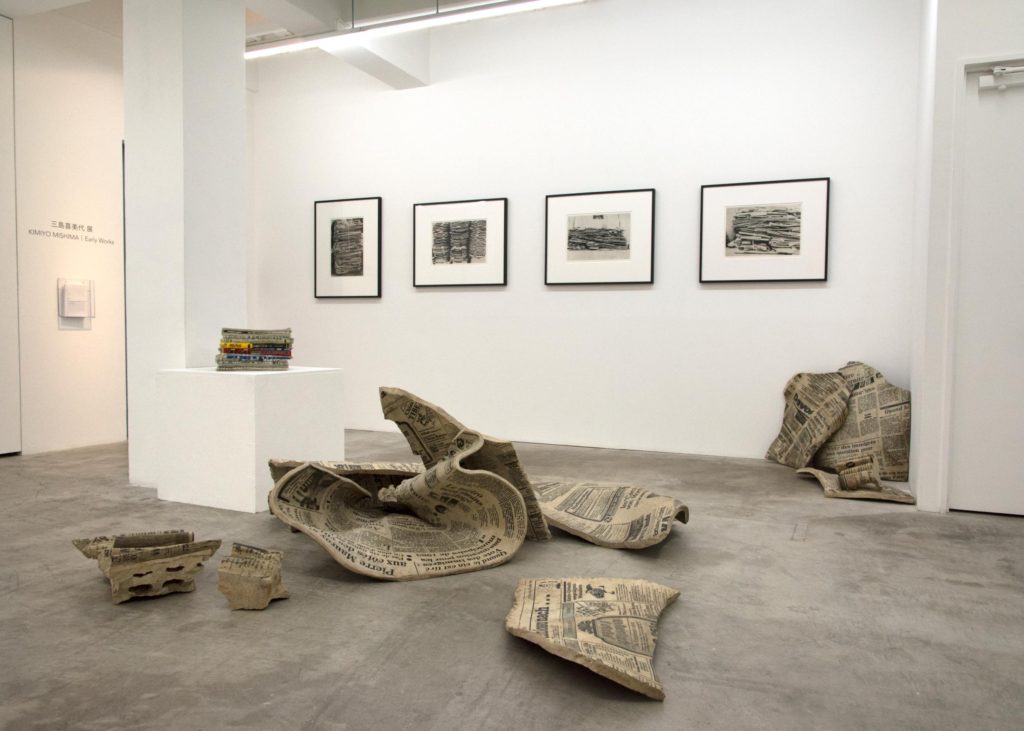
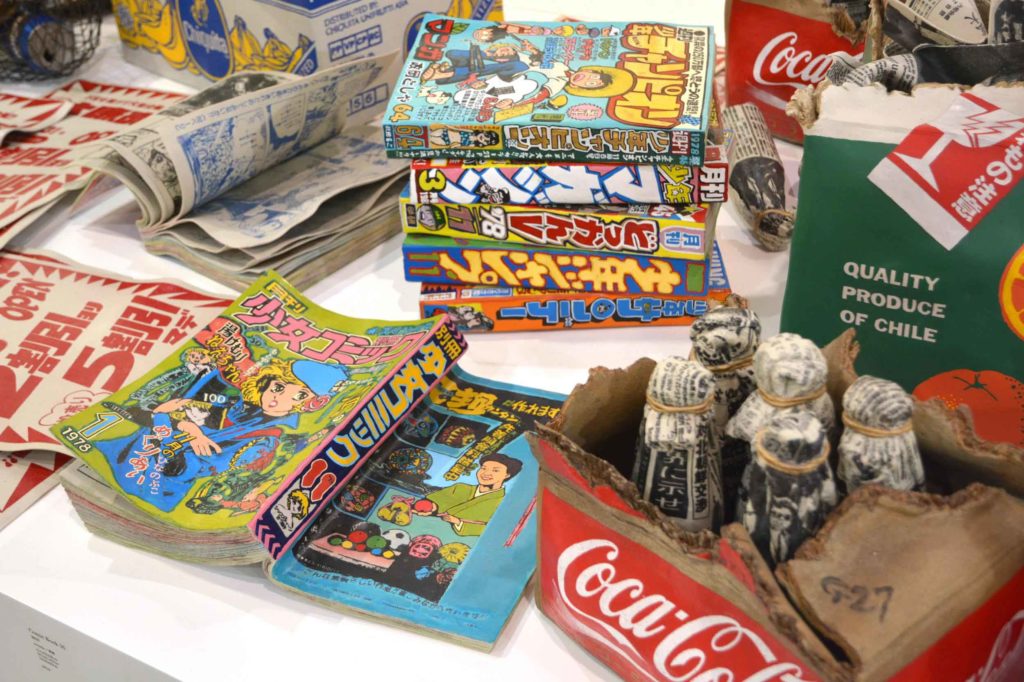
Silkscreened and hand-painted on ceramic
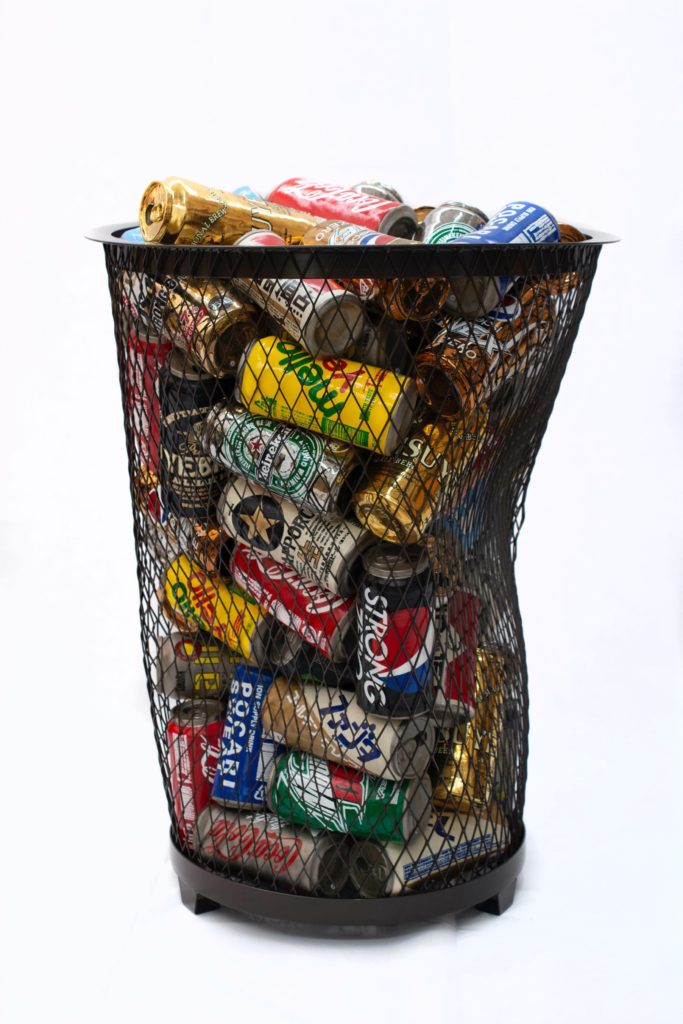
2019, Silkscreen and hand-painted on ceramic, iron, 74×56×56cm
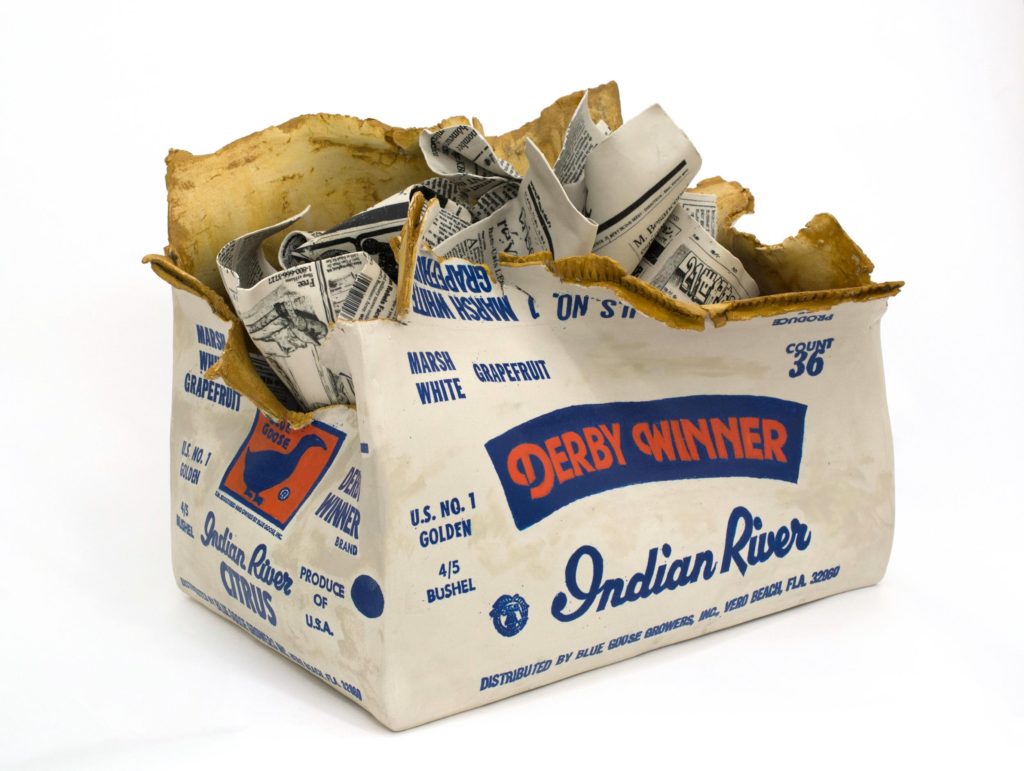
2010–2011, Silkscreen and hand-painted on ceramic, 55×40×40cm
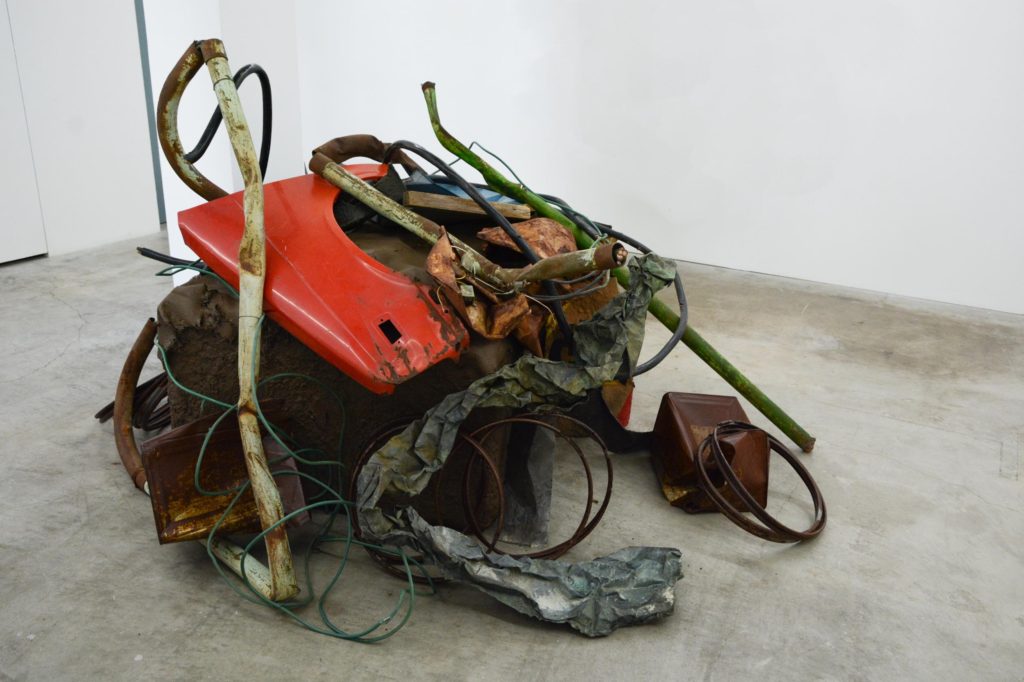
2017–2020, Tin, iron, melted slag, shirasu ( Volcanic Ash), glass fiber, styrofoam, copper, electric cable, 220×190×120cm
Fossils of Information
Born in Juso, Osaka, Kimiyo Mishima began oil painting under a painter from the Dokuritsu Bijutsu Kyokai while she was in high school. After graduating from high school, she exhibited her work at the Dokuritsu Exhibition, organized by the Dokuritsu Bijutsu Kyokai. Although she gradually moved on to abstract, Mishima started out with representative paintings, such as still lifes, under the painter, Shigeji Mishima, whom she later married. She joined an art school called Atelier Montagne, where Shigeji Mishima, the founder, was teaching. Having studied under Tsuguro Ito before the war, and Jiro Yoshihara after the war, Shigeji Mishima was an intellectual, a special student at Kyoto University and also well versed in philosophy. The couple were both close to their contemporaries in the Gutai group, which Yoshihara founded, although they never became members. Mishima began experimenting with canvas and started collaging magazines and newspapers on paintings. Later, she also tried silkscreen with canvas. There is an interesting anecdote about Mishima using the losing tickets of horse races, accumulated from her husband’s hobby of going to race tracks, for her collage work.
Mishima got her ideas for sculptures from newspapers laying curled up on the floor of her studio that she was using for collage. Facing limits in collage painting, she started searching for unique materials and making prototypes with glass and plastic. One day, she came to realize that ceramic would break if it was dropped. She thought it might be an interesting concept to make a sculpture of a fragile material that requires tender care. So she started studying ceramic sculptures and made prototypes of three-dimensional newspapers in 1970–71. In those days, various newspapers, along with all sorts of magazines, including fashion, entertainment and graphic arts, had largely started making people eager to seek the latest information. Newspapers and magazines were thrown away in droves, and information was consumed, not for knowledge but for passing entertainment. Mishima was alarmed by this, and gave newspapers a new eternal life in ceramic that would last as long as it didn’t break. At the same time, they were delicate insubstantial things that had to be treated with care. That was the point of this work.
In 1972, Mishima presented her first ceramic newspaper sculptures at a solo exhibition at the Muramatsu Gallery in Ginza, Tokyo. She met Kusuo Shimizu of the Minami Gallery, who was devoutly introducing foreign contemporary art to Japan, and held a solo exhibition at the gallery in 1974. Seeing ceramic newspapers and other materials left around on the floor, some visitors mistook it to mean the exhibition was still under preparation. Around 1980, She came up with the idea of scaling up her ceramic newspapers and other three-dimensional objects. Life-sized ceramic telephone poles and large-scale newspapers are currently in the Yamamura Collection at the Hyogo Prefectural Museum of Art. The giant newspaper sculptures have become Mishima’s trademark.
Currently installed on the grounds of the Benesse House Museum in Naoshima is a five meter tall trash can sculpture. Contained in the trash can are giant sheets of waste paper, also made of ceramic. Due to her creations of day-to-day objects, like cardboard boxes of oranges and bananas, Mishima is sometimes misrepresented as a potter who makes realistic everyday objects in ceramic. However, she has been working with a wide range of different ‘garbage-themed’ materials that vary in size and style. These include volcanic ash, bricks, molten slag produced by processing industrial waste at high temperatures and used in building materials, and also actual newspapers. Mishima’s work process includes recycling and regeneration of industrial waste and other various materials. Her works are created through these processes. Some of her three-dimensional projects, made of molten slag, are exact copies of industrial waste. She has continuously picked up and worked with materials in the process of decay caused by human greed and utilitarianism. In her new exhibition at MEM in 2020, her 1990s work using volcanic ash was given new life as three-dimensional collages and reliefs by being fused with scrap car parts and other materials. On a large lot in Toki city in Gifu Prefecture, in Mishima’s studio you will find every type of trash imaginable. After many years, this accumulated collection is awaiting a new life as a work of art.
(K.I.)
Between Garbage and Art 1
An interview with Kimiyo Mishima by Atsuhiko Shima
